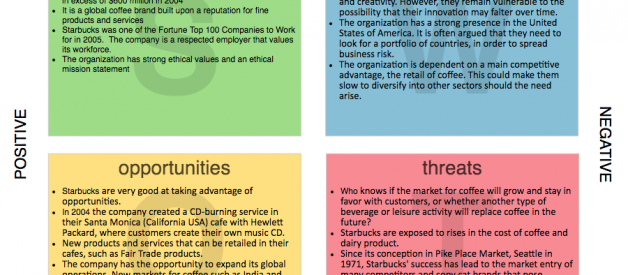Strategic Analysis is a core step in the Strategic Learning Cycle. Every strategist should have a toolset of analytical models at his or her disposal. However, there are many techniques and tools available for strategy analysis. If you google around the web, you will find a long list of options available. The challenge is to acquire the right techniques and tools for a given business problem. This article give you a brief introduction for you to jumpstart the strategic analysis learning process.
What is Strategic Analysis?
First comes first, what is strategic analysis? Strategic analysis helps you explore your growth options, addresses challenges within your industry, and makes better corporate decisions. Strategy analysis is an approach to facilitating, researching, analyzing, and mapping an organization?s abilities to achieve a future envisioned state based on present reality and often with consideration of the organization?s processes, technologies, business development and people?s capabilities.
 Powerful Strategic Analysis Toolset ? Visual Paradigm Online
Powerful Strategic Analysis Toolset ? Visual Paradigm Online
You need to look outside of our organization to identify the changes out there and to look forward and think about the opportunities in future. Strategic analysis is not just about understanding changes. It is about turning this into concrete actions through generating options and choices, making decisions and integrating this into your organization?s planning process.
Selected Strategic Analysis Tools
Just as having the right tools won?t necessarily make you a good mechanic, having the right strategy analysis tools won?t automatically make you a good strategist ? but they will help you get jobs done more effectively. Here is a list of essential tools for strategy analysis:
SWOT Analysis
SWOT analysis is a technique developed at Stanford in the 1970s, frequently used in strategic planning. SWOT is an acronym for Strengths, Weaknesses, Opportunities, and Threats and is a structured planning method that evaluates those four elements of an organization, project or business venture. A SWOT analysis is a simple, but powerful, framework for leveraging the organization?s strengths, improving weaknesses, minimizing threats, and taking the greatest possible advantage of opportunities.
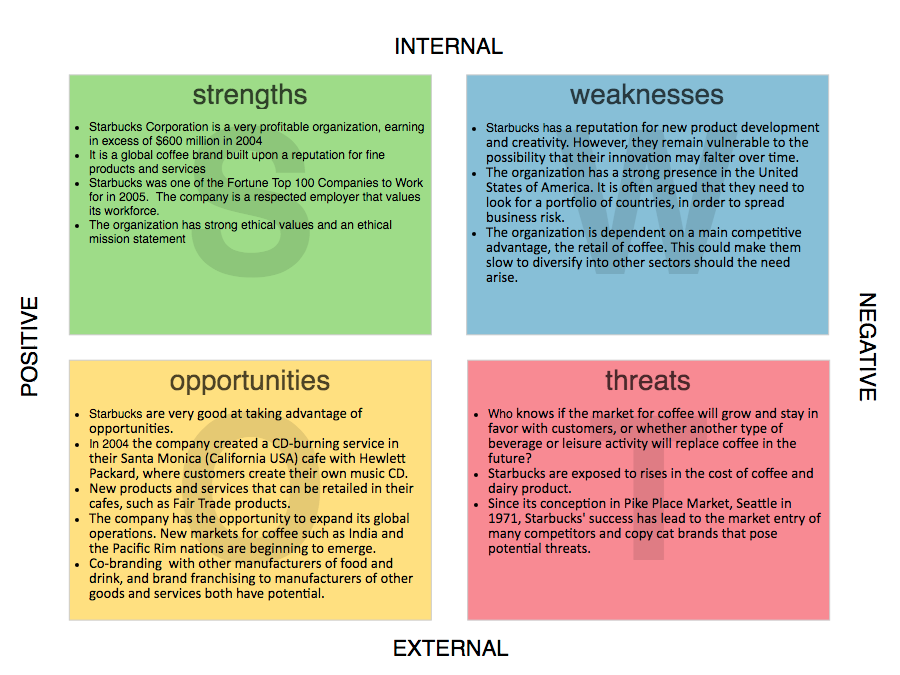
(Open and Edit above SWOT Analysis Example Instantly)
SWOT analysis is a process where the management team identifies the internal and external factors that will affect the company?s future performance. It helps us to identify of what is happening internally and externally, so that you can plan and manage your business in the most effective and efficient manner.
PEST Analysis
The PEST analysis is a useful tool for understanding market growth or decline, and as such the position, potential and direction for a business. PEST is an acronym for Political, Economic, Social and Technological factors, which are used to assess the market for a business or organizational unit. Sometimes it?s expanded to include legal and environmental factors and called a PESTLE analysis.
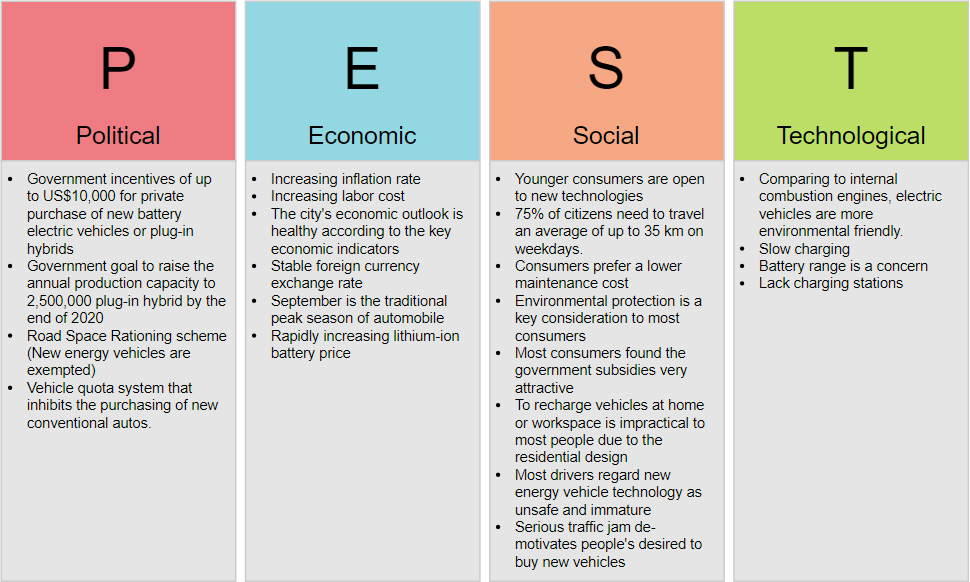
Open and Edit the above PEST analysis example instantly
A PEST analysis guides us to identify effective strategies for setting priority, allocating resources, planning for time and development roadmap and formulating control mechanisms. With this analysis, you can identify potential opportunities and threats associated with your strategy and figure out ways to take advantage of them and avoid them.
Value Chain Analysis
Value chain analysis is a way to visually analyze a company?s business activities to see how the company can create a competitive advantage for itself. Value chain analysis helps a company understands how it adds value to something and subsequently how it can sell its product or service for more than the cost of adding the value, thereby generating a profit margin. In other words, if they are run efficiently the value obtained should exceed the costs of running them i.e. customers should return to the organization and transact freely and willingly.
Originated in the 1980s by Michael Porter, value chain analysis is the conceptual notion of value-added in the form of a value chain. He suggested that an organization is split into ?primary activities? and ?support activities?. The figure below divides activities into primary and support activities as suggested by Porter?s Value Chain Analysis model.

Open and Edit the above Value Chain Analysis example instantly
Five Forces Analysis
Michael Porter developed the Five Forces Model in 1980. Michael Porter?s Five Forces is a powerful competitive analysis tool to determine the principal competitive influence in a market. It is a broadly used model in business that refers to the five important factors that drive a firm?s competitive position within an industry. By thinking through how each force affects you, and by identifying the strength and direction of each force, you can quickly assess the strength of the position and your ability to make a sustained profit in the industry. Thus Five Forces analysis helps you stay competitive by:
- Knowing the strength of these five forces, you can develop strategies that help their businesses be more competitive and profitable.
- Looking at opportunities, you can to strengthen their organization?s position compared to the other players for reducing the competitive pressure as well as generate competitive advantage.
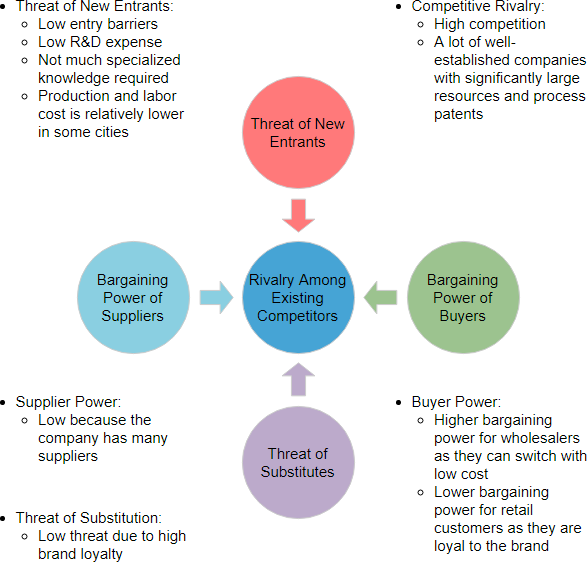
Open and Edit the above Five Force Example Instantly
Four Corners Analysis
The Four Corners Analysis, developed Michael Porter, is a model well designed to help company strategists assess a competitor?s intent and objectives, and the strengths it is using to achieve them. It is a useful technique to evaluate competitors and generate insights concerning likely competitor strategy changes and determine competitor reaction to environmental changes and industry shifts. By examining a competitor?s current strategy, future goals, assumptions about the market, and core capabilities, the Four Corners Model helps analysts address four core questions:
- Motivation ? What drives the competitor? Look for drivers at various levels and dimensions so you can gain insights into future goals.
- Current Strategy ? What is the competitor doing and what is the competitor capable of doing?
- Capabilities ? What are the strengths and weaknesses of the competitor?
- Management Assumptions ? What assumptions are made by the competitor?s management team?
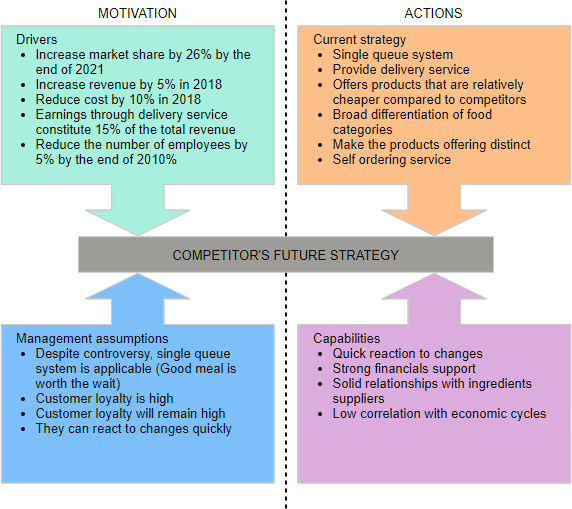
Open and Edit the Above Four Corner Analysis Example Instantly
Strategy Analysis using Process Map Design
Visual Paradigm Online provides a configurable process map designer for business to create their on process maps for wide variety of are such as strategy analysis, competitive analysis, process roadmap, comparison matrix, sales process, etc. There are over fifty of these examples and templates here.
Here I include competitor analysis and root cause analysis example here in these toolset for strategic analysis using the Process Map Designer.
Have fun and design your own processes for your business!
Competitor Analysis
Getting to know your competitor?s strengths and weaknesses can be crucial to your business?s success. The competitor analysis tool of VP Online features a powerful competitor analysis map that enables you to compare your brand with your competitors, giving you fast and valuable insights in identifying the best marketing strategies. The competitor analysis map can be customized to suit any needs. Plus, you can edit and access the analysis anywhere because VP Online is an online competitor analysis software that runs on any device, any browser.
Listed below are the competitor analysis tools available. Click on an image to take a quick look, or click on the Edit button to edit it online. No prior-registration required. More competitor analysis examples are available inside the competitor analysis software.
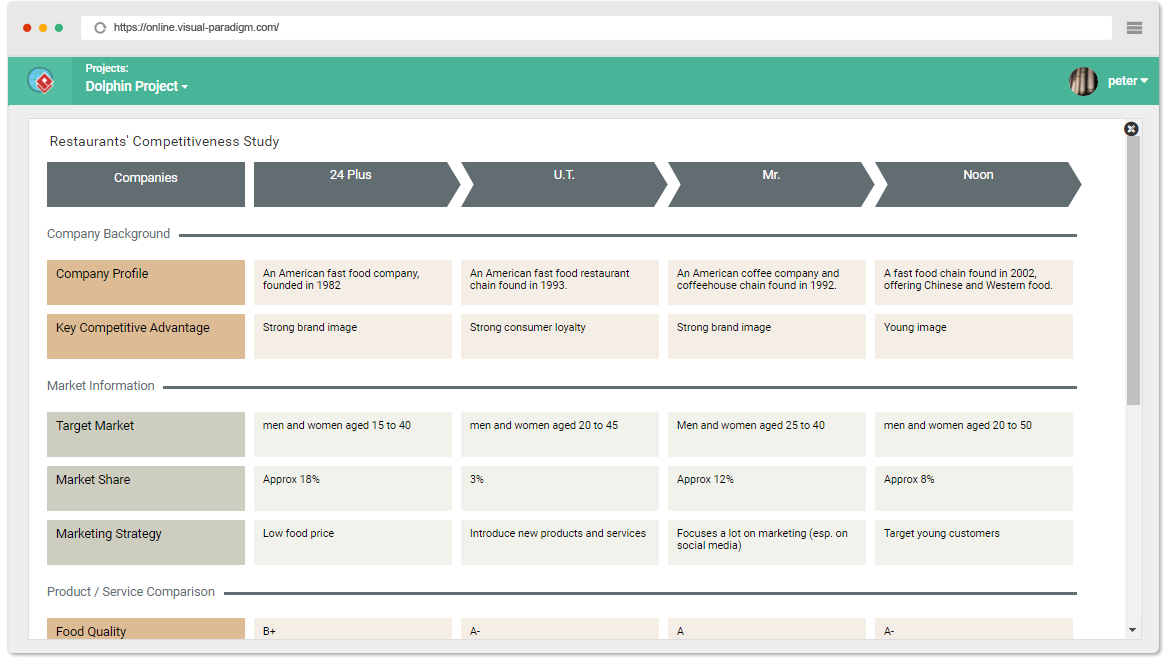 Competitor Analysis ? online.visual-paradigm.com
Competitor Analysis ? online.visual-paradigm.com
Open and Edit the above Competitor Analysis Instantly
Root Cause Analysis
Getting to know the underlying causes of incidents and problems can prevent recurring issues and thus saving you significant operation costs. While traditional root cause analysis techniques are lengthy, costly and error-prone, VP Online provides various Root Cause Analysis tools that speeds up problem analysis and prevention. Plus, you can access the tool anywhere because VP Online is an online root cause analysis software that runs on any device, any browser.
VP Online comes with a number of customizable Root Cause Analysis tools that support different domain and problem solving needs. Click on the images below to view the examples, or click Edit to try. No prior-registration required! More Root Cause Analysis examples are available inside the Root Cause Analysis tool.
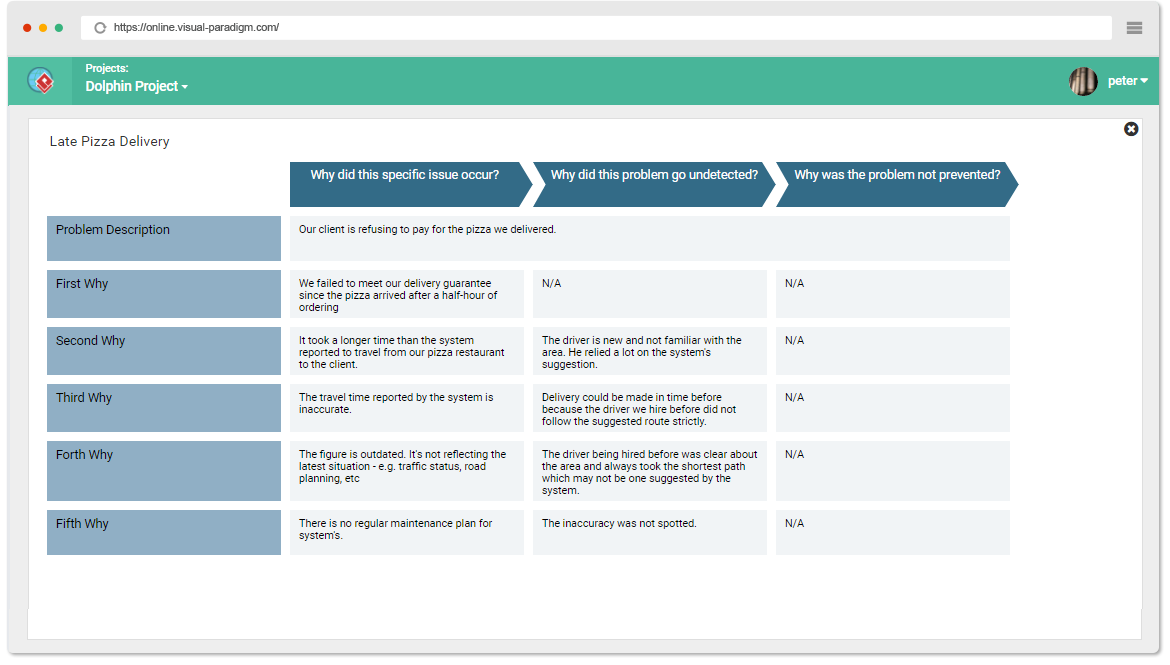 Root Cause Analysis ? online.visual-paradigm.com
Root Cause Analysis ? online.visual-paradigm.com
Open and Edit the Above Root Cause Analysis Example Instantly
